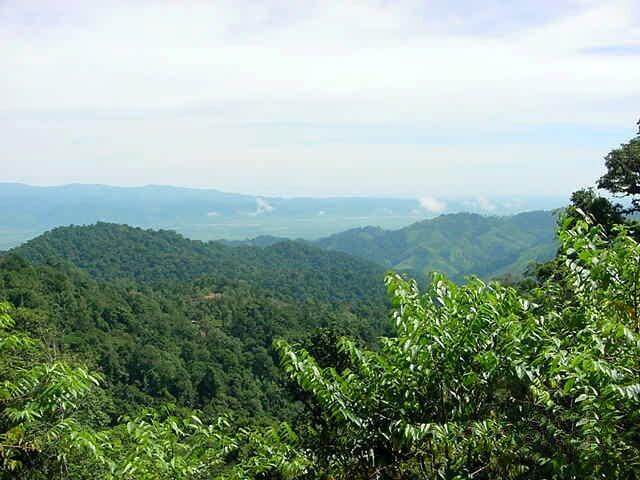New Guatemalan Reserve to Protect Threatened Birds, Endangered Frogs, and a Blue Viper
 |
(Washington, D.C., June 3, 2014) Conservationists are celebrating the Guatemalan Government's formal establishment of a new 47,000-acre (19,013 hectare) protected area in Guatemala that will safeguard some of the country's most endangered wildlife. The reserve is home to three species of threatened birds, a host of migratory birds that breed in the United States, a dozen globally threatened frogs and salamanders, five found nowhere else in the world and the rare Merendon palm-pitviper (Bothriechis thalassinus), an arboreal, blue-toned venomous snake.
The National Congress of Guatemala established the National Protected Area on May 13, 2014, by an overwhelming pro-conservation vote of 106 in favor out of a total of 125 Congressmen present in the session. It is the first new protected area designated by congress in Guatemala in nine years.
The Core Zone of this new protected area, the 6,000-acre Sierra Caral Amphibian Conservation Reserve, was established in 2012 by Fundación para el Ecodesarrollo y la Conservación (FUNDAECO) with assistance from American Bird Conservancy (ABC), Global Wildlife Conservation, Southern Wings, World Land Trust, and others. The conservation value of the area is reflected in its previous designation as a global Alliance for Zero Extinction (AZE) site, owing to its status as the last place on earth providing habitat for Wake's hidden salamander.
Tucked away in the eastern corner of Guatemala near the Caribbean Sea and running along the Honduran border, the newly protected area is named the Sierra Caral Water and Forest Reserve due to its location in the Sierra Caral mountain range in the Caribbean municipality of Morales, Izabal Department. Along with other forested sites in the region, Sierra Caral contains critical overwintering and stopover sites for nearly 120 species of neotropical migratory birds, along with 13 species that are regionally endemic and three threatened species: Highland Guan, Great Curassow, and Keel-billed Motmot. Migratory birds include the Canada Warbler, Kentucky Warbler, Wood Thrush, Painted Bunting, Worm-eating Warbler, and Louisiana Waterthrush. Thirty-three migratory species with population declines in their breeding grounds have been reported in Sierra Caral.
 |
Living on the brink: the critically endangered Morelet's Treefrog. Photo: Carlos Vasquez |
Exploration of these mountains over the past two decades has yielded several new discoveries of beetles, salamanders, frogs, and snakes. At least 118 species of amphibians and reptiles are reported for this area including seven endemic amphibians only recently discovered there.
“We have been working to obtain the legal declaration of this new protected area for more than seven years,” said Marco Cerezo of FUNDAECO, a leading Guatemalan conservation organization. “Finally, the biological importance of Sierra Caral has been recognized by our National Congress. This new protected area brings us a step closer toward our dream, which is the conservation of key stop-over and wintering habitats for migratory birds along their flyway across Caribbean Guatemala.”
“Guatemalan officials demonstrated great vision in establishing this protected area,” said Andrew Rothman, Migratory Bird Program Director at ABC. “They have preserved a key link in the migration corridor between North and South America for migratory birds and ensured North American breeding songbirds will have stopover and wintering ground habitat to use during migration. Without question, it is a key addition to Central America's roster of protected areas.”
 |
| View of Sierra Caral's rare low-elevation cloud forest. Photo: FUNDACEO. |
Thousands of years ago, the Sierra Caral Mountains were likely islands where species evolved that are found nowhere else. With the additional convergence of North and South American flora and fauna in this region, Sierra Caral is one of the most unique places for wildlife on Earth.
Sierra Caral had been steadily deforested over the past decade. Rampant clear-cutting and conversion of the forested mountain slopes into cattle pastures has degraded freshwater drinking sources for surrounding communities. Because of this, FUNDAECO and local community representatives persuaded the Guatemalan congress to declare the area a nationally protected area.


















































